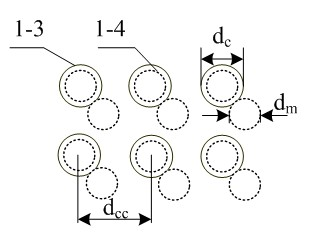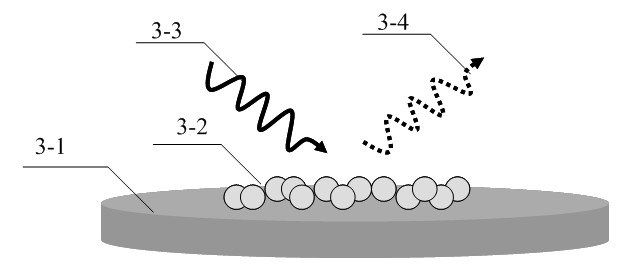Surface-enhanced Raman scattering active substrate based on carbon nanometer pipe arrays and metal nanometer particles
A technology of carbon nanotube arrays and metal nanoparticles, which is applied in the field of nanophotonics, can solve the problems of small surface area of Raman scattering active substrates, and achieve the effect of low preparation cost, simple production and low cost
- Summary
- Abstract
- Description
- Claims
- Application Information
AI Technical Summary
Problems solved by technology
Method used
Image
Examples
Embodiment Construction
[0016] The present invention will be further elaborated below in conjunction with accompanying drawing:
[0017] see figure 1 , the surface-enhanced Raman scattering active substrate based on carbon nanotube arrays and metal nanoparticles designed by the present invention includes a silicon substrate 1-1, a catalytic layer 1-2 for growing carbon nanotube arrays, a carbon nanotube array 1-3, and an attached Metallic nanoparticles on carbon nanotube array surfaces 1-4. The schematic diagram of the surface structure of the formed active substrate is as follows: figure 2 As shown, the equivalent diameter d of carbon nanotube arrays 1-3 c , the diameter d of metal nanoparticles 1–4 m , the period of carbon nanotube arrays 1-3 is d cc .
[0018] see image 3 ,Depend on figure 1 Substrate 1-1, catalytic layer 1-2 for growing carbon nanotube array, carbon nanotube array 1-3, metal nanoparticles 1-4 attached to the surface of carbon nanotube array, forming surface-enhanced Rama...
PUM
 Login to View More
Login to View More Abstract
Description
Claims
Application Information
 Login to View More
Login to View More - R&D
- Intellectual Property
- Life Sciences
- Materials
- Tech Scout
- Unparalleled Data Quality
- Higher Quality Content
- 60% Fewer Hallucinations
Browse by: Latest US Patents, China's latest patents, Technical Efficacy Thesaurus, Application Domain, Technology Topic, Popular Technical Reports.
© 2025 PatSnap. All rights reserved.Legal|Privacy policy|Modern Slavery Act Transparency Statement|Sitemap|About US| Contact US: help@patsnap.com



